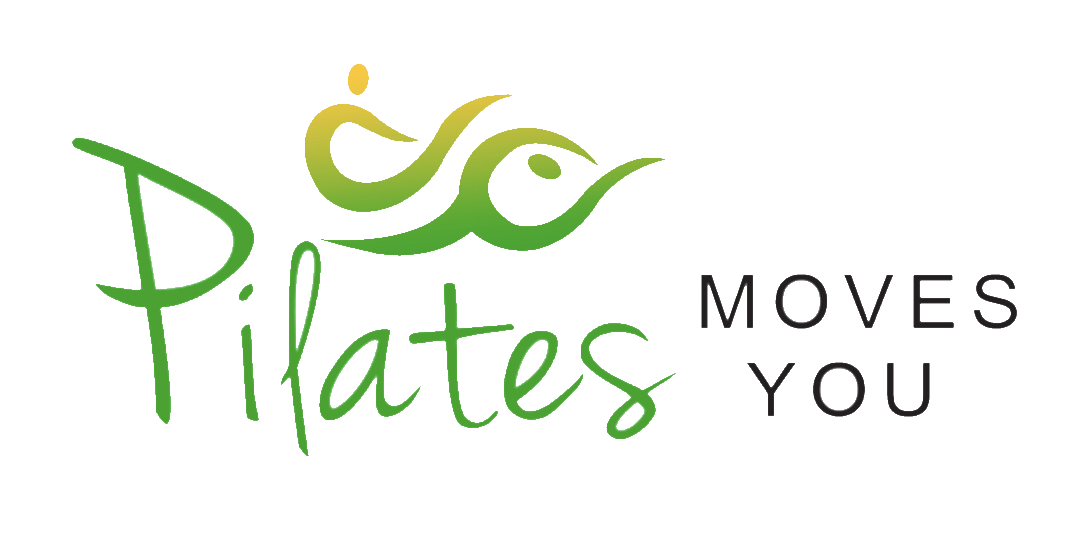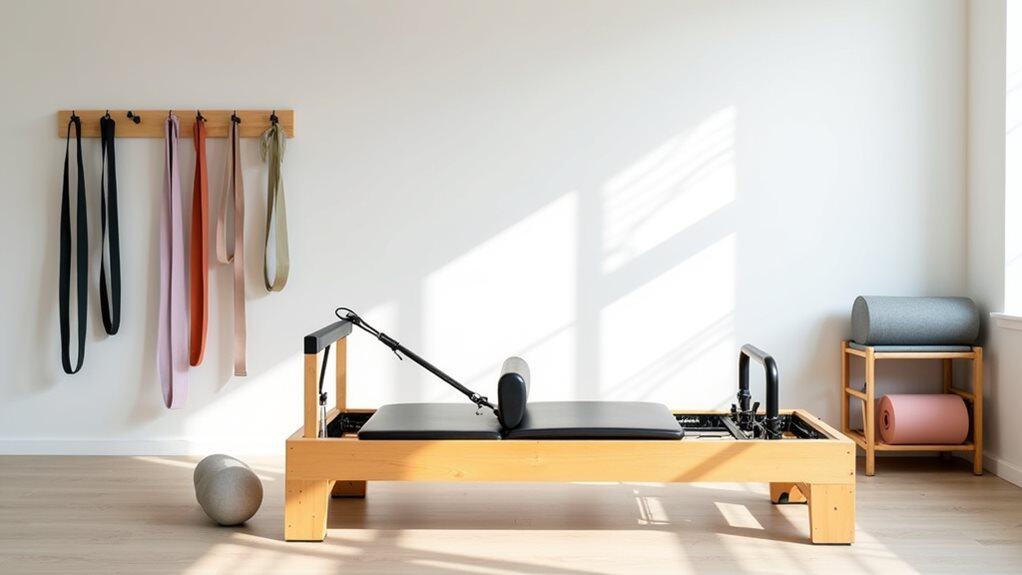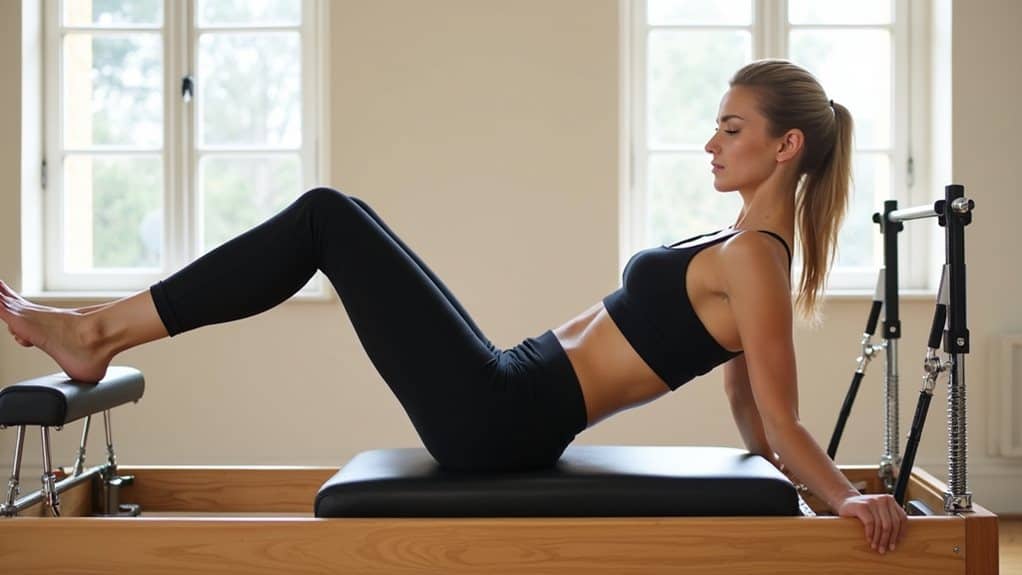Understanding the intricacies of Pilates, both as a practitioner and as an instructor, can be a gratifying journey filled with self-discovery and transformation. However, it’s a journey that often comes with a price tag. The quest to become a Pilates instructor involves costs in terms of time and commitment, and financial costs.
Becoming a Pilates instructor varies widely, typically ranging from $1,000 for a basic mat certification to $10,000 for comprehensive training, not including additional expenses like books and equipment.
This article sheds light on the various expenses of becoming a certified Pilates instructor, from comprehensive training programs to certification exams and ongoing educational investments. By understanding these costs more clearly, potential instructors can make informed decisions and plan effectively for this exciting career path.
Understanding the Costs: An Overview of Pilates Instructor Training
Training to become a Pilates instructor involves various costs, including coursework, workshops, mentoring, and certification exams. These elements together provide the comprehensive knowledge and practical skills needed to teach Pilates effectively and safely. Let’s take a deeper look into these costs to better understand what to expect when pursuing this career path.
Coursework
The primary cost associated with becoming a Pilates instructor is the coursework, which forms the foundation of your training. Comprehensive Pilates instructor training programs cover a wide range of topics, from anatomy and kinesiology to the specific techniques and exercises of the Pilates method.
The cost of these programs can vary widely depending on the organization providing the training, the depth and breadth of the course material, and the location and format of the classes. As of 2023, you can expect to pay anywhere from $3,000 to $10,000 for a comprehensive training program.
Workshops and Seminars
In addition to standard coursework, many training programs offer workshops and seminars that delve into specific areas of Pilates or provide additional training on teaching techniques.
These workshops can often be taken à la carte, allowing you to tailor your education to your interests and needs. The cost of these workshops can vary, but you can generally expect to pay anywhere from $100 to $500 per workshop.
Mentoring and Apprenticeship
Many Pilates training programs also require or recommend a period of mentoring or apprenticeship under an experienced Pilates instructor. This hands-on training allows you to apply what you’ve learned in the classroom to real-world teaching situations.
Costs associated with mentoring can vary widely, depending on the length of the mentoring period and the rates charged by the mentor.
Certification Exams
Once you’ve completed your coursework and any required apprenticeship hours, you must pass a certification exam to become a certified Pilates instructor. This exam typically includes both a written and a practical component to ensure that you thoroughly understand Pilates principles and can effectively teach a Pilates class. As of 2023, the certification exam costs typically range from $200 to $300.
It’s important to remember that these costs are estimates and can vary based on many factors. Be sure to research and reach out to training programs you’re interested in for the most accurate and up-to-date information.
Different Paths to Pilates Certification: Cost Comparison
There are several avenues to becoming a certified Pilates instructor, each with its associated costs. Your path will largely depend on your career goals, budget, and the time you can commit to training. Here are some of the most common routes to certification:
Comprehensive Pilates Training Program
A comprehensive Pilates training program provides in-depth instruction on all aspects of Pilates, including mat work, equipment exercises, anatomy, teaching techniques, and more. These programs are typically the most costly route to certification, but they provide the most comprehensive training. They’re ideal for those who want to work full-time as Pilates instructors and teach all aspects of Pilates.
Mat Certification Program
A mat certification program focuses exclusively on mat-based Pilates exercises. These programs are typically less expensive and require less time than comprehensive programs. They’re a great option for those who want to teach Pilates part-time or incorporate Pilates mat work into other fitness instruction.
Pilates Equipment Certification Program
These programs focus on teaching Pilates exercises that use equipment like the Reformer, Cadillac, and Chair. They are generally more expensive than mat certification programs but less expensive than comprehensive programs. Equipment certification is ideal for those who want to teach Pilates in studios equipped with Pilates apparatuses.
Here’s a rough cost comparison table for the different paths. Remember, these are just estimates, and costs can vary depending on many factors:
| Certification Path | Average Cost |
| Comprehensive Pilates Training Program | $3,000 – $10,000 |
| Mat Certification Program | $500 – $1,000 |
| Pilates Equipment Certification Program | $1,500 – $4,000 |
The additional costs for workshops, seminars, mentoring, and certification exams are not included in these estimates, so the total cost of becoming a Pilates instructor may be higher.
Detailed Breakdown: What Does a Pilates Instructor Course Include?
A Pilates instructor course is designed to equip you with the skills, knowledge, and confidence needed to instruct individuals or groups in the Pilates method. Below is a detailed breakdown of what is typically included in a comprehensive Pilates instructor course:
1. Theoretical Instruction
Theoretical instruction lays the foundation for understanding the Pilates method and its application. It includes:
- Principles of Pilates: You’ll learn about the key principles that underpin Pilates, such as centering, concentration, control, precision, breath, and flow.
- Anatomy and Physiology: A deep understanding of human anatomy and physiology is crucial to being an effective Pilates instructor. This helps you understand how different exercises affect the body and how to modify exercises for people with injuries or specific needs.
- Teaching Methodology: You’ll learn effective teaching techniques, including how to give clear instructions, how to provide effective demonstrations, and how to offer modifications for different ability levels.
2. Practical Training
Practical training gives you hands-on experience with Pilates exercises and equipment. This typically includes:
- Matwork Training: This involves learning the complete repertoire of Pilates mat exercises from beginner to advanced levels.
- Equipment Training: If you’re doing a comprehensive course, you’ll also learn to teach exercises on Pilates equipment, such as the Reformer, Cadillac, Chair, and Barrels.
3. Observation, Practice Teaching, and Apprenticeship
Most courses require several hours of observing experienced instructors, practicing teaching, and possibly apprenticing under a mentor. This helps you develop practical teaching skills and gain confidence.
4. Examinations
To earn your certification, you will typically need to pass both written and practical exams demonstrating your understanding of the course material and your ability to teach Pilates effectively.
5. Continuing Education
While not necessarily part of the initial course, continuing education is critical to maintaining your certification and staying current in your practice. This usually involves attending workshops, seminars, or additional courses every few years.
The specifics of what is included can vary based on the training program, so thoroughly research any program you’re considering to ensure it aligns with your career goals and learning needs.
Additional Expenses: Books, Equipment, and Continuing Education
While the primary costs of becoming a Pilates instructor are centered around the training programs and certification exams, there are additional expenses that prospective instructors should consider as part of their financial planning. These expenses include educational resources, Pilates equipment, and ongoing educational costs.
Books and Learning Materials
As a Pilates instructor, you’ll need a thorough understanding of human anatomy and movement, as well as the principles and practices of Pilates itself. This will likely require purchasing textbooks and other learning materials. While the specific books you’ll need may vary based on your training program, some common resources include:
- Pilates’ Return to Life Through Contrology by Joseph Pilates and William Miller
- Anatomy of Movement by Blandine Calais-Germain
- The Pilates Body by Brooke Siler
Expect to spend anywhere from $50 to $200 on books and learning materials, although this cost could be higher if your training program has specific and costly textbook requirements.
Pilates Equipment
If you’re pursuing a comprehensive certification that includes training on Pilates equipment, you may want to purchase some equipment for your practice. While many training programs have the equipment, you can use during your training, having your equipment at home can be beneficial for practice and personal workouts.
The most common equipment is the Pilates mat, but others include the Pilates ball, magic circle, resistance bands, and even larger equipment like a Reformer or a Pilates Chair. Depending on what you choose to buy, equipment costs could range from less than $100 for basic items to several thousand dollars for larger apparatuses.
Continuing Education
Becoming a Pilates instructor is not a one-and-done process. You’ll need to engage in continuing education to maintain your certification and stay up-to-date on the latest practices and techniques. This might involve attending workshops, enrolling in advanced courses, or renewing your membership with professional organizations.
Continuing education costs can vary widely but expect to budget for this annually. For workshops and seminars, costs can range from $100 to $500 each, and professional memberships can range from $50 to $150 per year.
All these costs contribute to your overall investment in becoming a Pilates instructor. By considering these costs upfront, you’ll be able to budget effectively and plan for a successful career in Pilates instruction.
Sources:
- https://www.pilatesinstructoracademy.com/blog.php?e=how-much-does-it-cost-to-become-a-pilates-instructor-
- https://pilatesbypamela.com/blog/become-a-pilates-instructor
- https://studiogrowth.com/become-pilates-instructor/
- https://unitehealth.com.au/how-much-does-it-cost-to-become-a-pilates-instructor




